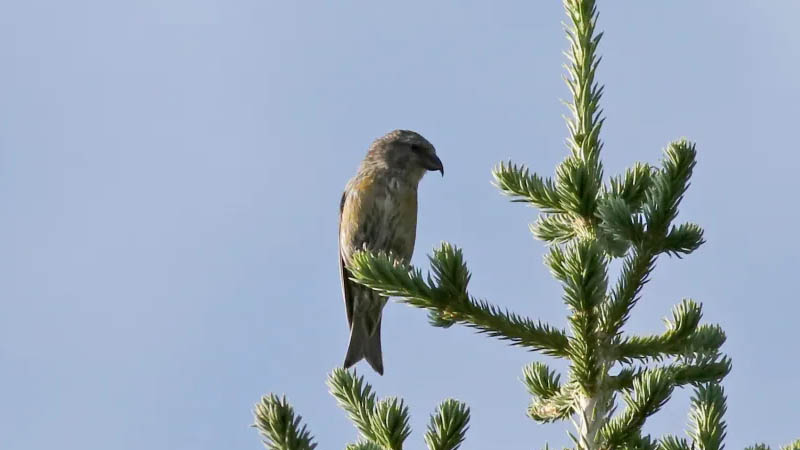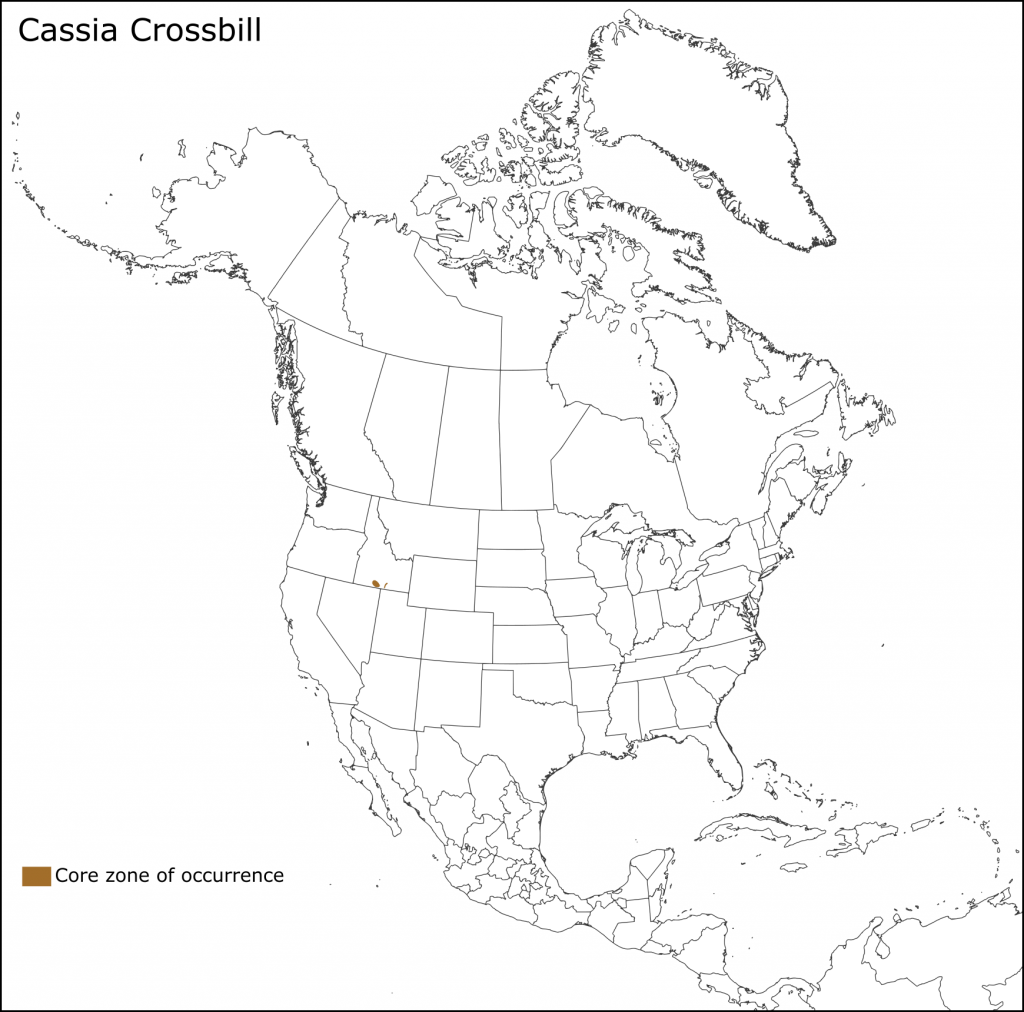Cassia Crossbill
Loxia sinesciuris Benkman et al. (2009)
Photo: @ Jay McGowan

Appearance
Medium-sized finch red (males) to yellow (females) finch with distinctive mandibles curved and crossed at the tip.
Size: L 7.25″
Shape: Medium-sized, short-tailed, big-headed, short-legged finch with distinctive heavy bill with tips that cross each other.
Adult Male: Body mostly all red or reddish-orange; wings and tail deep-brown; flight feathers and short, deeply notched tail both deep-brown. Second-year male’s orangish often becomes deeper red with age.
Adult Female: Brownish-gray or olive green, often brightest greenish-yellow on rump, crown, and breast; throat pale, distinguishing it from immature male.
1st Winter: Males may resemble adult males or adult females. Both sexes have buffy edges to the wing coverts (but not like well-defined white wingbar of White- winged Crossbill).
Juv: (June–Sept.) Brownish overall, with heavy brown streaking on whitish underparts.
Natural History
Was recently elevated as a species as Cassia Crossbill Loxia sinesciurus and is already a major conservation concern: http://www.hcn.org/articles/endangered-species-will-the-wests-newest-species-go-extinct. Restricted to South Hills and Albion Mountains of southern Idaho, in Twin Falls and Cassia Counties only. Resident, but may rarely wander to mountains to northeast of South Hills (Benkman et al. 2009). Uses a local variety of Lodgepole Pine that has evolved in absence of cone-predating pine squirrels. Flight call described as a low pitched very dry dip-dip-dip or dyip-dyip-dyip; very distinctive.
Taxonomy
Monotypic
Object of study
Conservation efforts! Will this remain a species or lumped back in with the Red Crossbill complex.
Known Call Types (Flight Call)
Flight call described as a low pitched very dry dip-dip-dip or dyip-dyip-dyip; very distinctive.

For more on Cassia Crossbill see here:
https://ebird.org/news/crossbills-of-north-america-species-and-red-crossbill-call-types/
Irruptions
Non-irruptive, but with current fires in the South Hills some birds are annual and breeding in Colorado and others have shown up in Wyoming and California.



